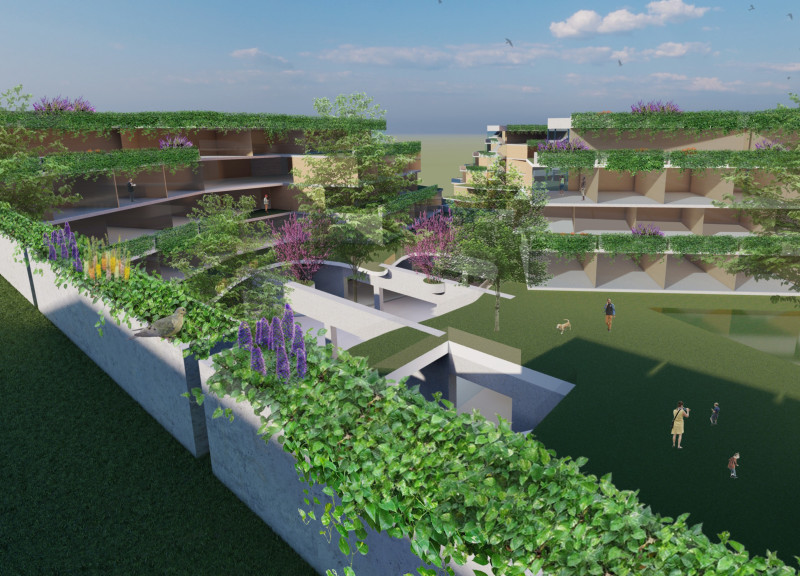5 key facts about this project
At its core, the project consists of a series of modular housing units constructed from cross-laminated timber, a material known for its sustainable qualities and efficiency in construction. This emphasis on modularity allows for flexibility, accommodating various household sizes and configurations, which enhances the project's ability to cater to a diverse population. Utilizing timber not only reduces the carbon footprint but also contributes to a warm and inviting aesthetic throughout the residential spaces.
A notable aspect of the design is the incorporation of green spaces, which are integral to the project’s philosophy. Rooftop gardens, communal courtyards, and landscaped terraces create a network of outdoor environments that foster community engagement and promote the well-being of residents. These spaces encourage both social interaction and a connection to nature, offering a respite from the urban context that surrounds them. The emphasis on greenery in urban architecture not only enhances the visual appeal of the project but also plays a crucial role in improving air quality and supporting biodiversity.
The design promotes a connected urban lifestyle by strategically situating the housing units adjacent to the Balboa Park BART station. This location enhances accessibility, allowing residents to engage with the wider San Francisco area easily. By prioritizing transit-oriented development, the project encourages reduced reliance on personal vehicles, aligning with broader sustainability goals that focus on decreasing urban congestion and promoting eco-friendly transportation options.
Public and private spaces are distinctly woven into the layout, creating a sense of community within the development. Shared amenities and commercially viable spaces are integrated into the project, encouraging not only residential occupancy but also a lively public realm. This blend of uses supports an active community atmosphere, fostering a sense of belonging among residents while catering to their social, shopping, and recreational needs.
The architectural design incorporates large glass windows and natural finishes that further facilitate a seamless indoor-outdoor experience, allowing ample natural light to penetrate the living spaces. This design choice emphasizes the project's commitment to creating a pleasant living environment while minimizing energy usage. The careful selection of materials, including durable concrete and natural landscaping elements, underlines the project's durability and ecological sensitivity.
Through its thoughtful design approaches, the Balboa Valley Housing project stands as a response to contemporary urban challenges, providing a viable solution to affordable housing while promoting a sustainable lifestyle. This project balances the practical needs of residents with the broader objectives of environmental responsibility and urban integration, showcasing how architecture can play a pivotal role in fostering community ties and enhancing quality of life.
For those interested in delving deeper into the design intricacies, architectural plans and sections of the project reveal further insights into the detailed thought processes and architectural ideas behind Balboa Valley Housing. Exploring the project presentation will provide a more comprehensive understanding of how these elements coexist to create a functional and inviting living environment.


























